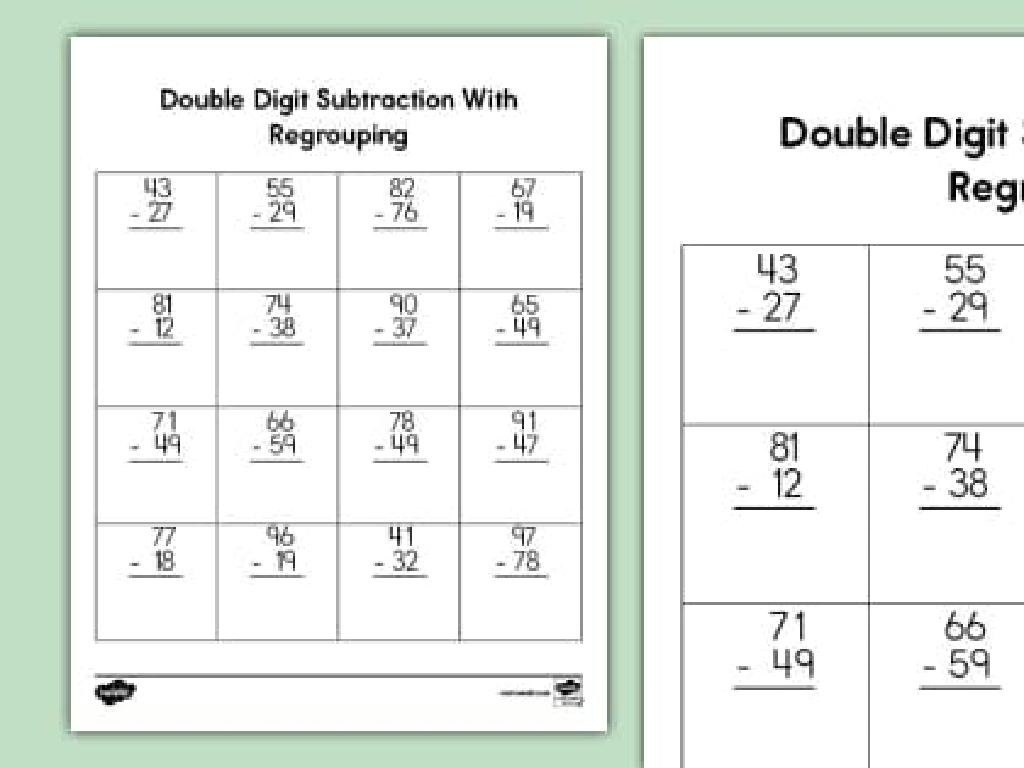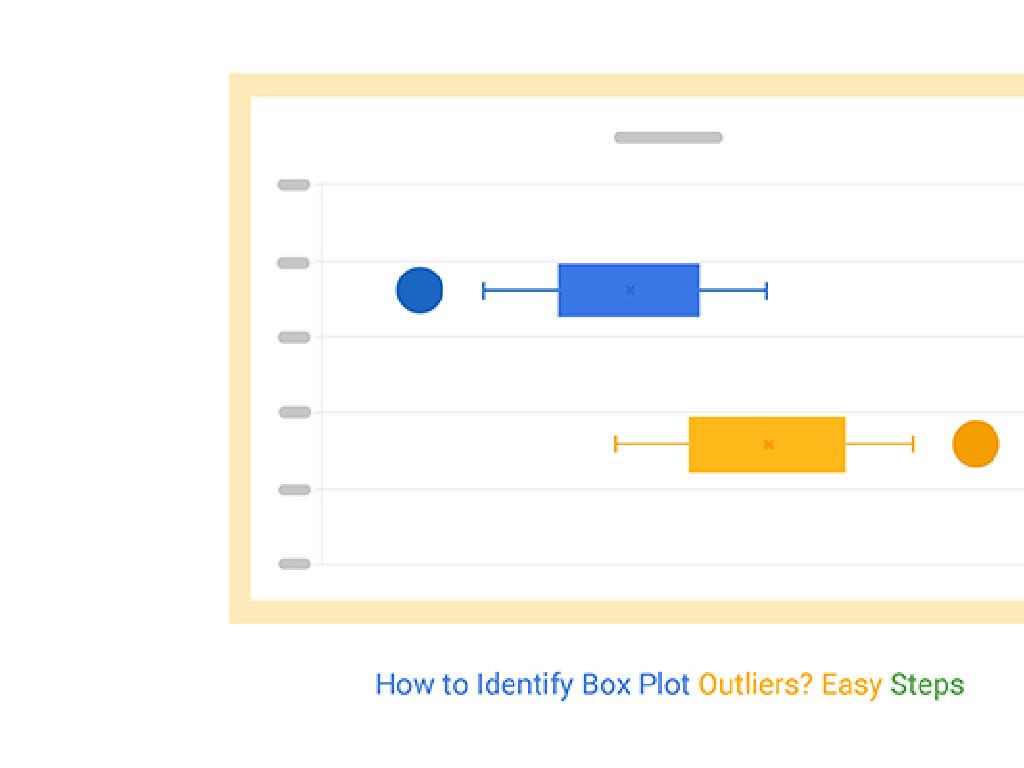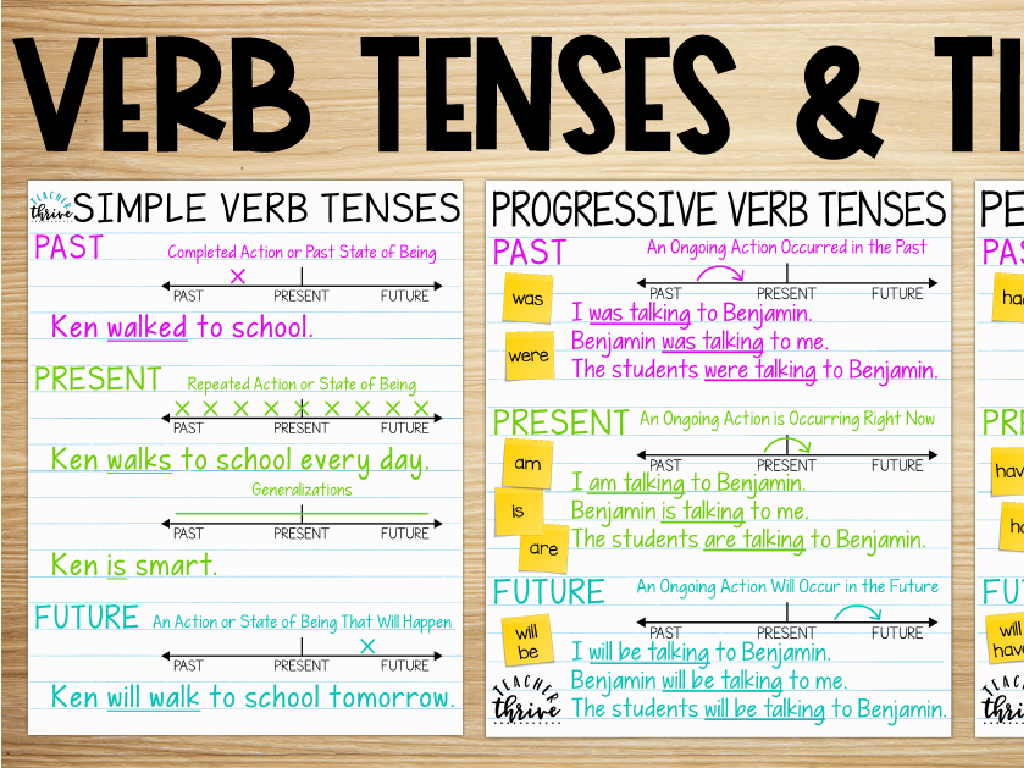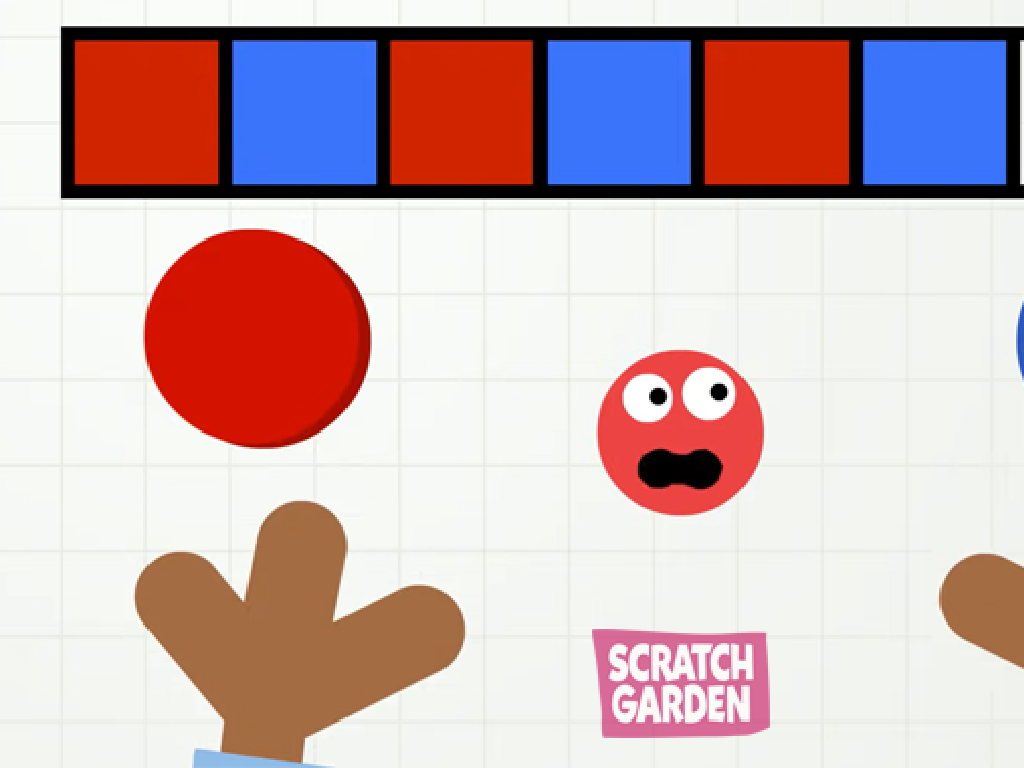Add And Subtract Decimal Numbers
Subject: Math
Grade: Fifth grade
Topic: Add And Subtract Decimals
Please LOG IN to download the presentation. Access is available to registered users only.
View More Content
Welcome to Decimals!
– What are decimals?
– Decimals represent fractions of a whole
– Today’s goal: Add & subtract decimals
– Learn the steps to perform these operations
– Decimals in daily life
– Used in money, measurements, and more
– Practice problems
– Solve examples together in class
|
This slide introduces students to the concept of decimals and sets the objective for the lesson, which is to learn how to add and subtract decimal numbers. Begin by explaining what decimals are and how they represent parts of a whole, similar to fractions. Emphasize the importance of decimals in everyday life, such as in dealing with money or measurements. The lesson will include guided practice where students will work through problems together to apply what they’ve learned. Encourage students to think of examples where they encounter decimals outside of school to make the lesson more relatable and engaging.
Understanding Decimals
– Decimals represent parts of a whole
– Just like fractions, decimals show amounts that are less than one whole.
– Learn decimal place values
– Tenths are 1/10, Hundredths are 1/100, Thousandths are 1/1000.
– Decimals in daily life
– Use decimals when dealing with dollars and cents, or meters and centimeters.
– Practice with money and measurements
– Let’s add $1.25 + $2.50 or subtract 1.5m – 0.75m.
|
This slide introduces the concept of decimals to fifth graders, explaining that decimals are another way to express fractions, specifically parts of a whole. Emphasize the place value system by comparing it to whole numbers and showing how each place represents a fraction with a denominator that is a power of ten. Provide relatable examples such as money and measurements to illustrate the use of decimals in everyday life. Encourage students to think of other examples where they encounter decimals. Activities can include adding and subtracting prices or measuring lengths, which will help solidify their understanding of decimal concepts.
Adding Decimals Step by Step
– Align the decimal points
– Place decimals directly above each other
– Add from right to left
– Start adding from the smallest value place
– Carry over when needed
– Similar to whole numbers, carry the extra value
|
When teaching students to add decimals, emphasize the importance of aligning the decimal points to ensure accuracy. This mirrors the process of stacking whole numbers directly above each other. Begin adding from the rightmost digits, which represent the smallest value place, and move left. If the sum of a column is more than 9, carry over to the next column, just like with whole numbers. Provide several examples with varying decimal places for practice. Encourage students to check their work by estimating the sum before adding. This slide will prepare students for class activities involving decimal addition.
Subtracting Decimals
– Align decimal points vertically
– Ensure decimals are one under the other
– Subtract from right to left
– Start subtracting with the smallest place value
– Borrow from the next left digit
– Similar to subtraction in whole numbers
– Check your work for accuracy
|
When teaching students to subtract decimals, emphasize the importance of lining up the decimal points to maintain the correct place value. This will often involve adding zeros to the end of a number to match the number of decimal places. Remind them to always start subtracting from the rightmost digit, moving towards the left. If a digit is too small to subtract from, they should borrow from the next digit to the left, just as they do with whole numbers. After completing the subtraction, encourage students to double-check their work. Use examples like money transactions where precision is key, and provide practice problems to reinforce the concept.
Let’s Practice Adding Decimals!
– Add: 0.75 + 1.25
– Example 1 equals 2.00
– Add: 3.6 + 2.47
– Example 2 equals 6.07
– Whiteboard collaboration
– Solve problems as a class
– Understand decimal addition
|
This slide is designed to engage students in practicing the addition of decimal numbers. Start with simpler addition like 0.75 + 1.25 to build confidence, then move to a slightly more complex example like 3.6 + 2.47, which involves aligning decimal points and adding numbers with different lengths. Encourage students to come up to the whiteboard to solve these problems, fostering a collaborative learning environment. Emphasize the importance of stacking decimals correctly and the role of place value in the process. This activity will help solidify their understanding of decimal addition and prepare them for more advanced problems.
Let’s Practice Subtracting Decimals!
– Subtracting decimals: Example 1
– 2.5 minus 0.9 equals 1.6
– Subtracting decimals: Example 2
– 5.25 minus 3.1 equals 2.15
– Whiteboard collaboration
– Understanding decimal subtraction
– Line up the decimals and subtract like whole numbers
|
This slide is focused on practicing decimal subtraction with the class. Start by solving the first example, 2.5 – 0.9, and ensure students understand how to line up the decimal points and subtract as if they were whole numbers. The answer is 1.6. Move on to the second example, 5.25 – 3.1, and show that sometimes you may need to add a zero to ensure the decimals are lined up correctly; the answer is 2.15. Then, invite students to the whiteboard to try similar problems together, fostering a collaborative learning environment. Emphasize the importance of decimal alignment for accurate subtraction. Provide additional examples if time allows and encourage students to explain their thought process to the class.
Solving Decimal Word Problems
– Apply decimal addition/subtraction
– Read the problem thoroughly
– Understand the story to solve the math problem
– Find and note the relevant numbers
– Write the decimals from the problem clearly
– Calculate with precision
– Use correct place value and alignment
|
This slide is aimed at helping students apply their knowledge of adding and subtracting decimals to solve word problems. Emphasize the importance of reading the problem carefully to understand what is being asked. Students should identify the numbers involved in the problem and write them down, paying special attention to the decimal points. Remind them to align the decimals correctly before performing the addition or subtraction. Encourage students to check their work for accuracy. As an activity, provide several word problems for students to practice, each with different contexts and decimal numbers to add or subtract. Discuss strategies for solving problems and common pitfalls to avoid.
Class Activity: Decimal Scavenger Hunt
– Search for decimal numbers around
– Record your decimal discoveries
– Write down each decimal number you find
– Add or subtract the decimals
– Use your math skills to combine them
– Present your findings to the class
|
This interactive activity is designed to help students recognize and work with decimal numbers in a fun and engaging way. Students will search the classroom for items that have decimal numbers on them, such as rulers, weight measurements on packages, or prices on items. They should write down each decimal they find and then perform addition or subtraction with those numbers. Encourage students to think about where decimals are commonly found and to be precise in their recording. After the hunt, students will share their findings with the class, explaining how they added or subtracted the decimals. This will reinforce their understanding of decimal placement and operations. Possible variations of the activity could include grouping students for team collaboration or setting up specific stations with decimal-related tasks.
Review and Upcoming Quiz
– Recap today’s decimal concepts
– Review adding and subtracting decimals
– Complete the decimal worksheet
– Worksheet has problems to solve at home
– Study for the next class quiz
– Quiz will cover addition and subtraction of decimals
– Practice makes perfect!
|
This slide is meant to summarize the key points from today’s lesson on adding and subtracting decimal numbers. It also sets expectations for homework and prepares students for a quiz in the next class. The homework worksheet provides additional practice to reinforce today’s concepts. Encourage students to review their notes and complete the worksheet to be well-prepared for the quiz. Emphasize the importance of practice in mastering decimal addition and subtraction. Offer some strategies for studying, such as working in a quiet space, checking work for accuracy, and asking for help if needed.






